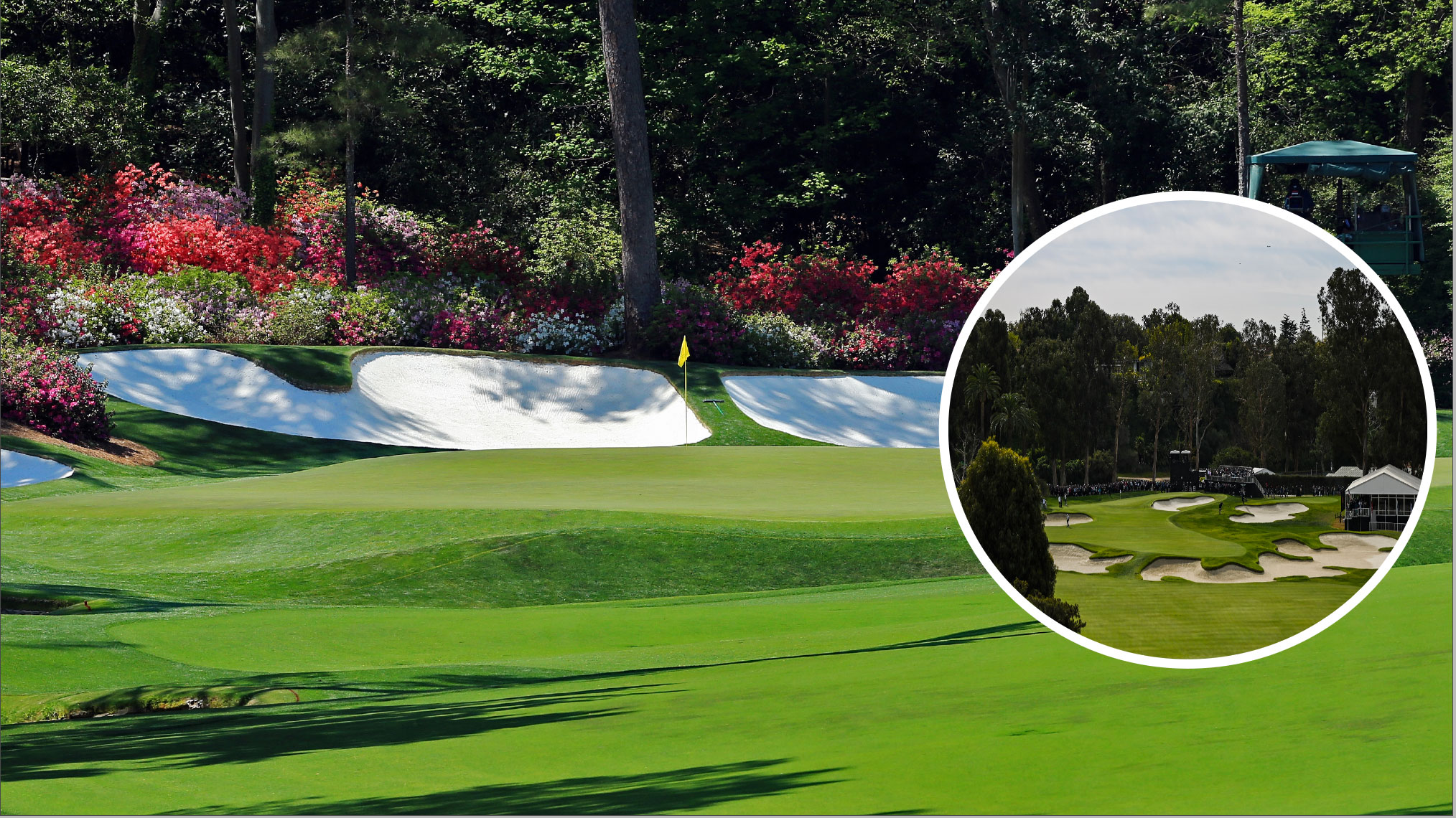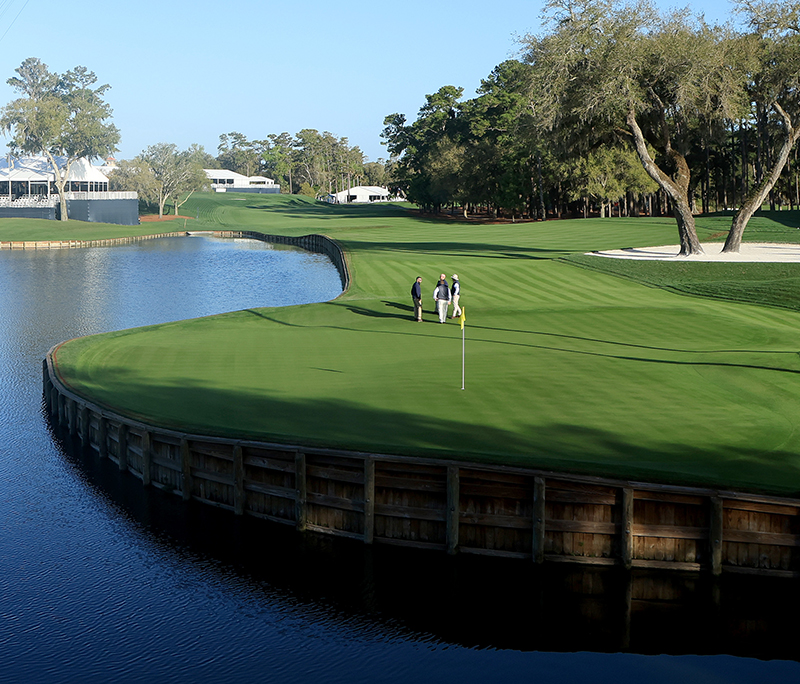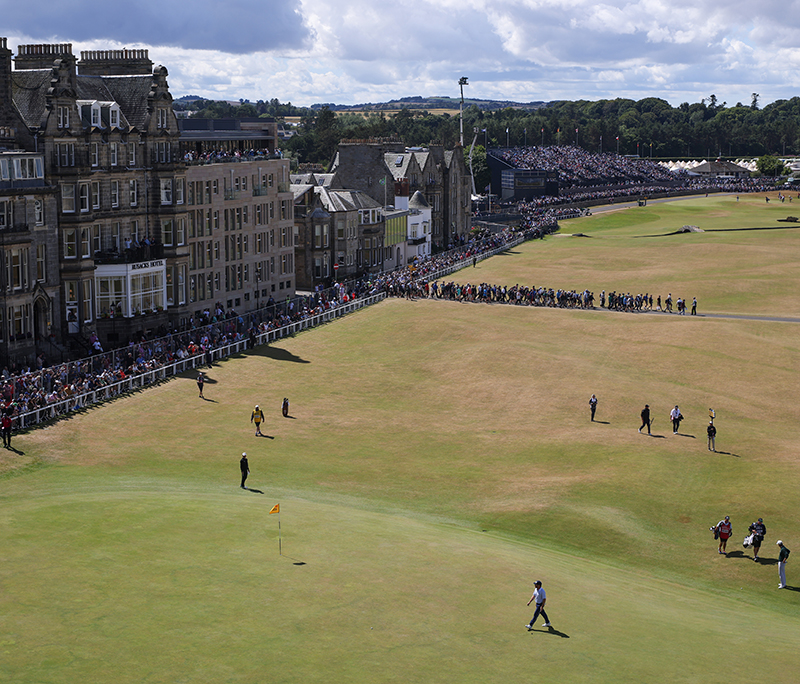
When many of us get a scorecard in our hands, the first thing we do is see how long the par 5s are and check if there are any reachable par 4s. Holes like the 13th at Augusta National and the 18th at St Andrews are iconic, but offer different experiences (for those lucky enough to play them!)
Some 65% of those who responded to a Golf Monthly X poll said they prefer a reachable par 5, but it's a debate that's often had in clubhouses around the world.
Below, Fergus Bisset and Jeremy Ellwood put their points of view across...
Reachable Par 5 – Says Fergus Bisset
Shorter par 5s stand out on a scorecard. When I take a first glance down at the pars and yardages at any course, par 5s measuring around the 500-yard mark are what get me excited. Those are the holes that will offer a chance to push on, or to recover shots that might have been frittered away. For me, a reachable par 5 screams opportunity. Find the green in two and putt for eagle!
Of course, a drivable par 4 also offers a chance to reach the putting surface in a shot under regulation, but, far more than a reachable par 5, they tend to be severely risk-and-reward holes.
Often the short par 4 will be incredibly well protected if you choose to take it on – a small green surrounded by bunkers, water, out of bounds or punishing rough. You might well enjoy the glory of smacking a drive on to the surface one time in ten, but the other nine times you’ll be left in a sticky situation, struggling to save par let alone having a chance for birdie.
The reachable par 5 will very often require not only strong hitting but also careful strategy. You may have the firepower to find the putting surface in two blows, but only if you position your tee shot in the correct place. More often than not, finding the short grass will be crucial to success. You might decide to bomb the driver to leave yourself a shorter approach with an iron, but maybe two 3-woods would be the best policy for getting the job done.
A drivable par 4 offers a thrilling one-shot chance for death or glory, but there’s much more to a reachable par 5. You can find the putting surface in two via various routes using a strategic approach. It’s the reachable par 5 that has the ability to turn your round back in the right direction.

Drivable Par 4 – Says Jeremy Ellwood
How is a short par 4 that you could just about drive in certain conditions, or if you hit your Sunday best, really any different to a par 5 you can reach in two, when the potential positives are the same – that rare opportunity for either an eagle or a two-putt birdie? Well, to achieve this feat on a par 4 you only have to hit that near-perfect shot once, whereas a reachable par 5 demands two consecutive pearlers. Most of us achieve such highs considerably less often than we would care to admit.
The drivable par 4 is golf’s one-off chance for glory, and despite the game’s best golfers constantly telling us how important it is to stay in the present, it’s almost impossible to not start thinking about such a hole as it draws closer. “Okay, not the start I wanted, but the 7th is downwind so I should get something back there.” Wise or otherwise, those thoughts are there.

It was just that way for me when I reached the 7th at Elie on the Fife coast in March 2020, playing pretty much my last game before lockdown one. It’s a relatively straight-away hole measuring just 252 yards and it was strongly downwind. I had eagle on my mind after a stuttering start.
Ten minutes later, I was marking eagle down on the card, too, after knocking it to 20ft and holing it. And here’s the thing – that was two-and-a-half years ago and I can still remember everything about that shot, while no other shots from that round have lodged in the memory to any discernible degree.
Should every course have a drivable par 4? I believe so, because while there are many holes where par is a very good score for most, isn’t it nice to also have some where you stand on the tee and think, “Just one great shot…”







